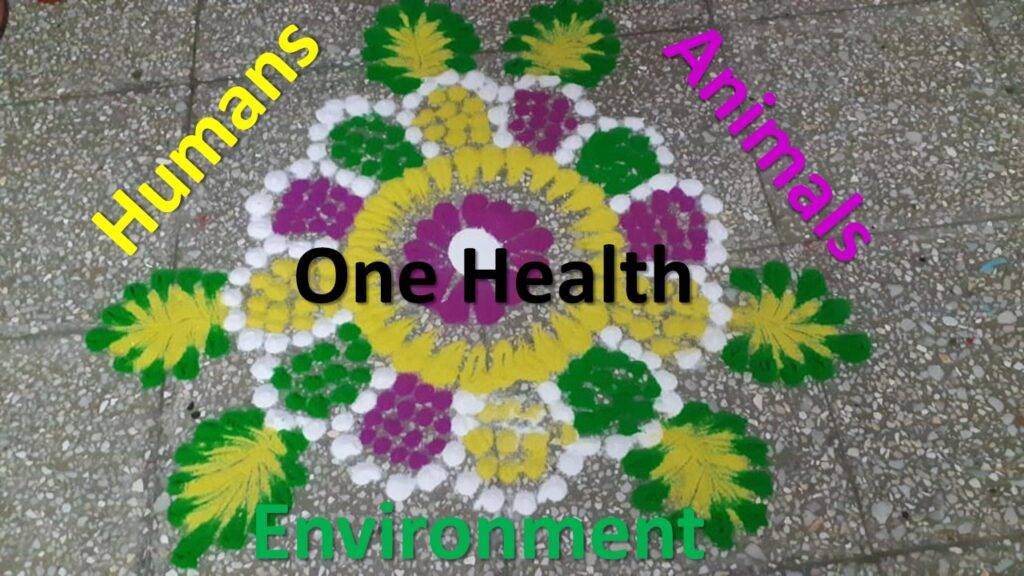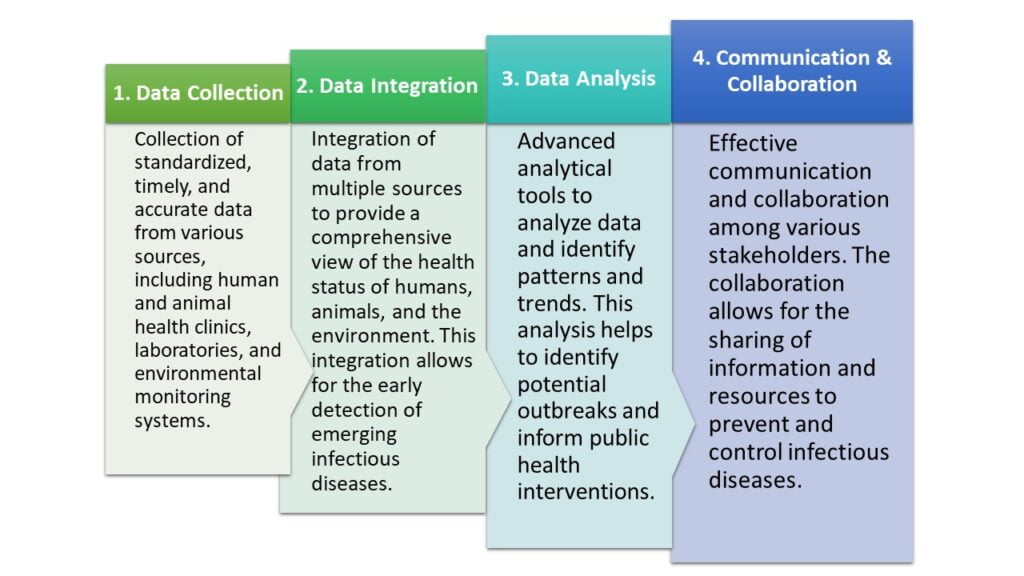
The concept of One Health has emerged as a crucial approach to understanding and managing infectious diseases. This is because humans, animals, and the environment coexist and interact closely in the interconnected world. Infectious diseases have been a major threat to human and animal health for centuries due to climate change, globalization, and urbanization. The conventional disease surveillance system focuses independently on humans, animals, plants and the environment. On the other hand, One Health recognizes the interdependence of human, animal, and environmental health. In addition, it emphasizes the need for coordinated surveillance systems to control and prevent infectious diseases effectively. Therefore, a scientific approach with effective strategies for establishing robust One Health surveillance systems is crucial to safeguard public health.
Understanding One Health
One Health is a holistic approach that acknowledges the intricate relationships between humans, animals, and the environment. Infectious diseases, especially zoonotic diseases that transfer between animals and humans, exemplify the need for a unified surveillance system. About 60% of infectioous disease of human are direcly or indirectly originated from animals including both wild and domestic. Therefore, transmitting diseases like COVID-19, Ebola, and avian influenza underscores the urgency of a collaborative One Health framework. One Health surveillance system is for addressing these challenges and providing a comprehensive approach to control and prevent infectious diseases.
One Health Surveillance Systems
It is a system that integrates data from multiple sources to monitor and detect infectious diseases that can affect humans, animals, and the environment. The goal of One Health surveillance is to identify and respond to emerging infectious diseases before they become a public health threat. A successful One Health surveillance system requires collaboration and coordination among stakeholders, including public health officials, veterinarians, environmental scientists, and policymakers.
Components of One Health Surveillance Systems

- Data Collection: One Health surveillance systems collect data from various sources, including human and animal health clinics, laboratories, and environmental monitoring systems. The data collected should be standardized, timely, and accurate.
- Data Integration: One Health surveillance systems integrate data from multiple sources to provide a comprehensive view of the health status of humans, animals, and the environment. This integration allows for the early detection of emerging infectious diseases.
- Data Analysis: One Health surveillance systems use advanced analytical tools to analyze data and identify patterns and trends. This analysis helps to identify potential outbreaks and inform public health interventions.
- Communication and Collaboration: One Health surveillance systems require effective communication and collaboration among various stakeholders. The collaboration allows for the sharing of information and resources to prevent and control infectious diseases.
Strategies to control and prevent infectious diseases
- Early Detection and Response: Developing early warning systems is crucial to detect and respond to emerging infectious diseases promptly. In addition, monitoring unusual disease patterns, animal die-offs, or environmental changes may indicate disease emergence.
- Vaccination: Vaccination is one of the most effective ways to prevent infectious diseases. Notably, vaccines can be developed for both humans and animals to prevent the spread of infectious diseases.
- Interdisciplinary Collaboration: The foundation of an OHS system is collaboration among various sectors. Moreover, government agencies, healthcare providers, veterinarians, ecologists, and researchers must work together to gather and analyze data.
- Data Sharing and Integration: OHS relies on the sharing and integration of data from medical records, veterinary reports, environmental monitoring, and wildlife studies. Establishing data-sharing protocols and platforms is essential to create a comprehensive picture of disease dynamics.
- Risk Assessment and Modeling: Modeling and risk assessment tools can help predict disease outbreaks and guide intervention strategies. These models incorporate data from human populations, animal populations, and environmental factors to assess the likelihood of disease transmission. In addition, they provide a proactive approach to disease prevention and control.
- Surveillance at Key Interfaces: Targeted surveillance at the human-animal-environment interfaces is vital. This includes monitoring high-risk areas such as wet markets, farms, and regions with a history of zoonotic disease transmission.
- International Cooperation: Infectious diseases do not respect borders. Therefore, international collaboration is essential for tracking and controlling infectious diseases, as demonstrated by global responses to pandemics like COVID-19.
- Capacity Building: Strengthening the capacity of healthcare systems, veterinary services, and environmental agencies is essential for effective surveillance.
- Public Awareness and Education: Educating communities about the risks of zoonotic diseases and the importance of responsible practices can significantly contribute to reducing disease transmission. Notably, the key to all environmental progress and development is public awareness!
Conclusion
Based on the foregoing discussion, it is clear that the One Health surveillance systems can play a critical role in controlling and preventing infectious diseases in our interconnected world. Moreover, by fostering collaboration among diverse sectors, sharing data, implementing early warning systems, and promoting international cooperation, we can better detect and mitigate the impact of infectious diseases. Scientific approaches and effective strategies are essential for safeguarding public health and the well-being of both humans and animals.

